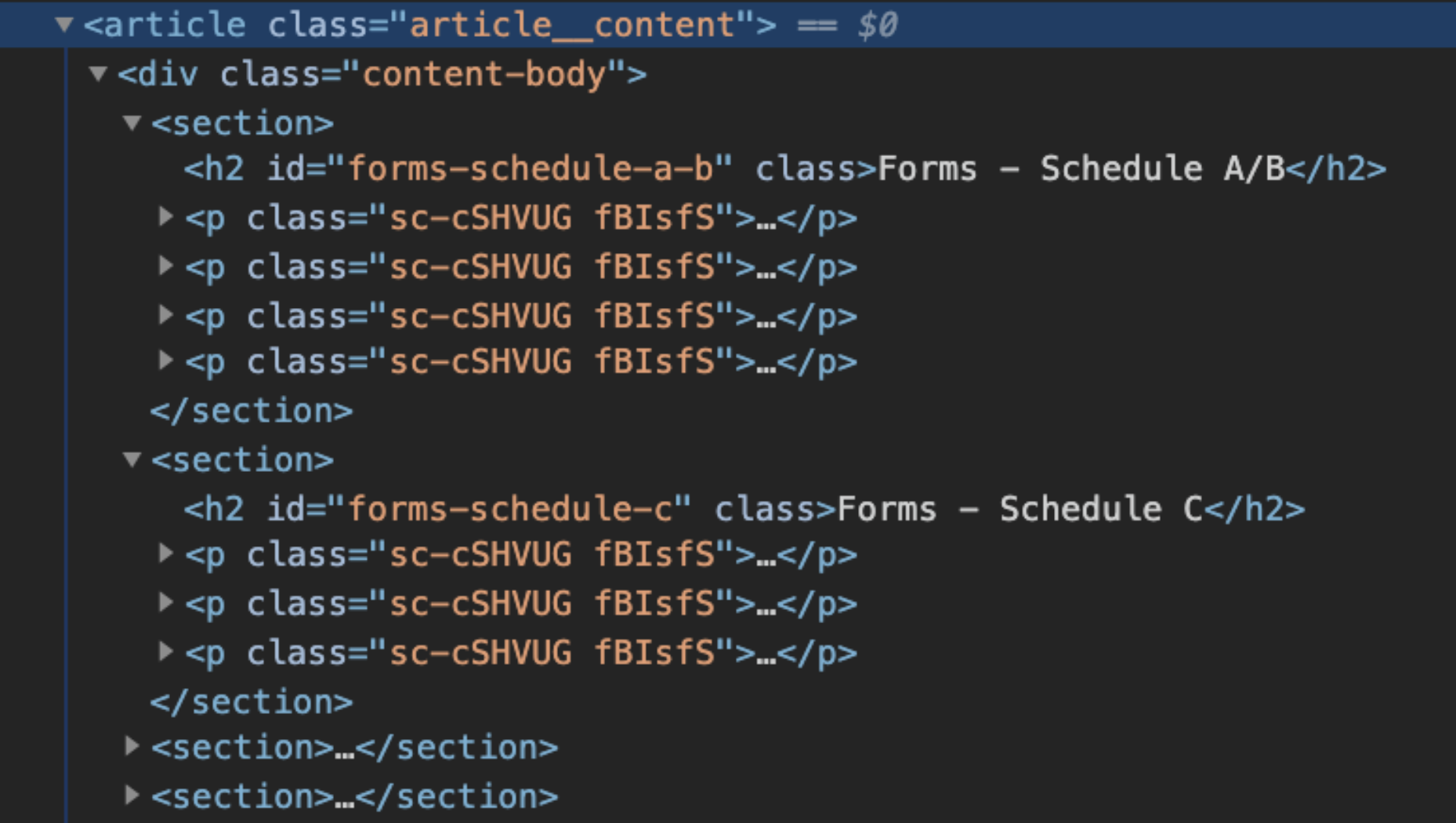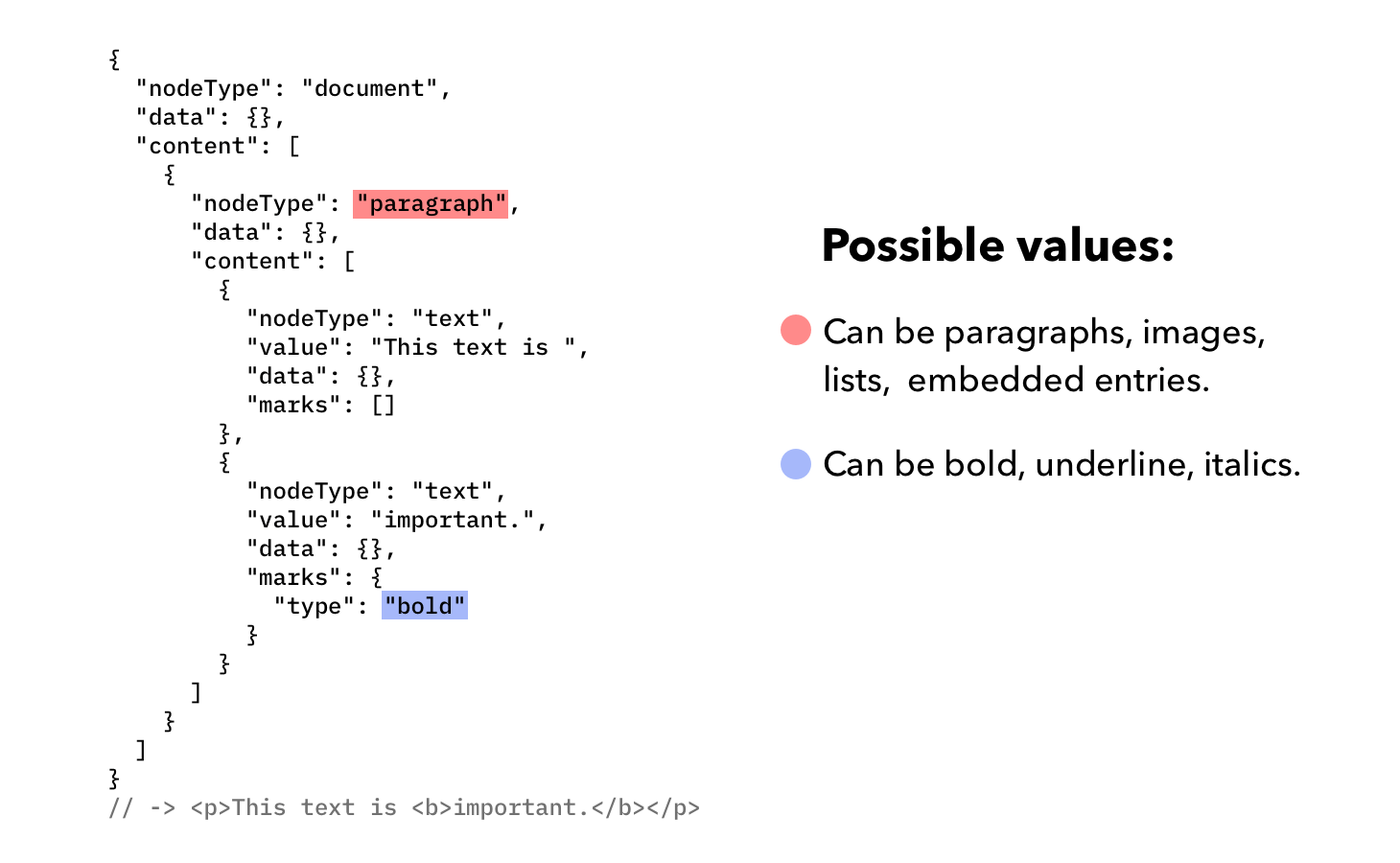

There are many cases in which HTML serialization is not what you want. Render your document: renderer.render(document) Using different renderers
CONTENTFUL RICH TEXT INSTALL
Install Contentful Rich Text Renderer from the Python Package Index: pip install rich_text_renderer UsageĬreate a renderer: from rich_text_renderer import RichTextRenderer All behaviour can be overridden to serialize to different formats. īy default this library will serialize RichText fields into it’s corresponding HTML representation. It is recommended to be used alongside the Contentful Delivery SDK.

This library provides rendering capabilities for the RichText field type. It offers a central hub for structured content, powerful management and delivery APIs, and a customizable web app that enable developers and content creators to ship digital products faster.
CONTENTFUL RICH TEXT SOFTWARE
Unlike a CMS, Contentful was built to integrate with the modern software stack. That's how you render the rich text data from Contentful into Gatsby.Contentful provides a content infrastructure for digital teams to power content in websites, apps, and devices. You can see here that we are seeing indeed our image, and all the headings are rendered correctly. Let's remove the cache and public folder, and then run again. That's probably because of cache problems. Let's go to the options here, and then add the blocksEmbedded asset, and return an image with the correct URL. We can do the same, like we did with headings, and then render the correct element. That's because the renderer does not display images by default, mainly because it's an asset, and an asset can be something else different than an image.

It requires PHP 7.2 and up or PHP 8.0 and up.

Let's stop our server here, and then run it again. This library is built to help you with the parsing and rendering of the rich text field type in Contentful. What we'll take here is the same content, but we will wrap it into an h2 with a class name textForExcel. For every heading two, we will receive this callback, and then we can return how we can show it up. Let's first import blocks from the Contentful rich text types, and we add here a second argument, an object configuration. To do that, the documentToReactComponent accepts a second argument to add additional styling and markup to every node type. We want to apply to it the same class name as the title in here. If we inspect this element, for example, it's an h2. If we save now and run our server again, and once we refresh, we can see indeed here we have the content. We take this function, and in the markup here, we give it the data from the body. We need to import the documentToReactComponent function from the rich text React renderer. In the lesson JS here, we need to add the body to the query. First, let's stop our server, and then npm install contentful/rich-text-react-renderer and contentful/rich-text-type. To do that, we can use the rich text React renderer. We need a way to parse this JSON to React components. In the result here, we have all our nodes, and you can see the type and all the content. If we go to the GraphQL, and then request the body, inside of the body, we can see JSON. Let's take a look first how this data is sent to us. We would like to show more text from this body, which is of type rich text. If we click in one of the lessons, we can see the detail, but here, we're only showing the title. Instructor: We have our Gatsby website, listing lessons coming from Contentful.


 0 kommentar(er)
0 kommentar(er)
